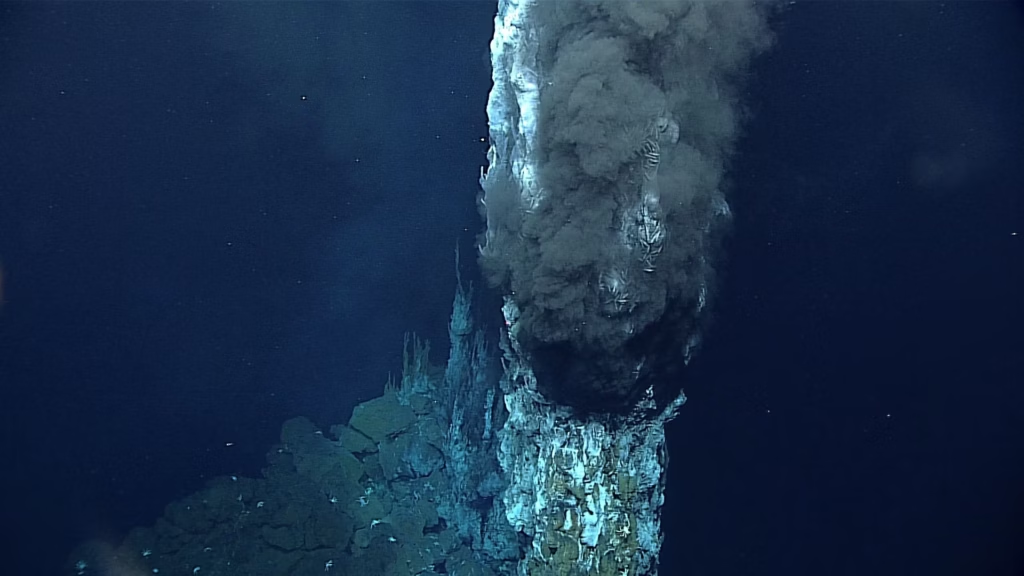The ocean covers over 70% of the Earth’s surface, yet more than 80% of it remains unexplored. While we gaze at the stars and dream of distant planets, there is an alien world right beneath our feet—a place of darkness, crushing pressure, and terrifying unknowns. Nowhere is this more evident than in the deepest parts of the ocean, specifically the hadal zone, which includes trenches that descend beyond 11,034 meters (36,201 feet) into the Earth’s crust.
The Mariana Trench, home to the Challenger Deep, is the deepest known part of the world’s oceans. But beyond the scientific data lies a profoundly horrifying realm—a place so extreme, so foreign, that even our best submersibles and rovers struggle to survive. From otherworldly creatures to environments that crush submarines like tin cans, these deep-sea realms are not only dangerous—they’re nightmare-inducing.
1. Challenger Deep – Mariana Trench, Western Pacific
Located at the southern end of the Mariana Trench, Challenger Deep is the deepest known point on Earth, plunging to about 11,034 meters below sea level.
This pressure is equivalent to over 1,000 times the atmospheric pressure at sea level—enough to crush a human body instantly. The temperature hovers just above freezing, and sunlight never penetrates. If hell had a deep-sea version, this would be it.
Few manned missions have reached this terrifying depth. The first was in 1960, by Jacques Piccard and Don Walsh in the Bathyscaphe Trieste. The second came over 50 years later, in 2012, when filmmaker James Cameron made his solo dive in the Deepsea Challenger. The limited number of visits highlights the perilous nature of this location.
And what lives here? Creatures with translucent skin, massive teeth, bioluminescent lures, and grotesque shapes—all evolved to survive in an environment that is more alien than Earth-like.
2. Sirena Deep – Mariana Trench
Located just 200 kilometers east of Challenger Deep, Sirena Deep reaches a terrifying depth of 10,714 meters. Although less publicized, it’s just as horrifying. Few explorations have dared to touch its depths, and the limited data we have only serves to add to the mystery.
Images from remotely operated vehicles (ROVs) reveal a hellscape of mud volcanoes, hydrothermal vents, and strange life forms, such as ghostly amphipods and translucent sea cucumbers. The crushing silence, darkness, and lack of current make this zone eerily still, like the bottom of a forgotten world.
3. Hossack Deep – Philippine Trench
Often overlooked, the Hossack Deep in the Philippine Trench measures approximately 10,545 meters deep. It’s one of the most active tectonic zones on Earth, making it a literal death trap of seismic activity and underwater landslides.
The horrifying nature of Hossack Deep isn’t just the depth—it’s the instability. Earthquakes, tsunamis, and shifting crusts create an ever-changing landscape of destruction. Combine that with razor-thin oxygen levels, volcanic gas pockets, and creatures that appear more like monsters than marine life, and you have one of the most menacing places in the ocean.
4. Kermadec Trench – South Pacific
Reaching depths of 10,047 meters, the Kermadec Trench is not only one of the deepest trenches in the world but also biologically rich and terrifyingly isolated. Located northeast of New Zealand, this trench is a cold, silent abyss that houses gigantic amphipods, serpent-like hagfish, and flesh-ripping isopods.
What’s horrifying about the Kermadec? It has one of the highest levels of deep-sea biodiversity combined with extreme toxicity. The region is laced with subduction zones that release methane and hydrogen sulfide, creating deep-sea “toxic lakes.” These pockets are so poisonous that even specialized creatures avoid them, making them ghostly, desolate zones of death.
5. Izu-Ogasawara Trench – Japan Trench Extension
This trench system extends to depths exceeding 9,780 meters, and it’s a region of constant tectonic activity. Known for triggering deadly tsunamis and mega-earthquakes—including the 2011 Tōhoku earthquake—it’s a cauldron of subterranean chaos.
Deep within this trench, the few ROVs that have descended report violent temperature shifts, rapidly shifting rock formations, and pockets of boiling mud. The trench is home to deep-sea vents that resemble underwater volcanoes, erupting in complete darkness with scalding, toxic gases.
Living in this abyss are giant amphipods, six-eyed crustaceans, and eyeless fish that detect their prey through electric fields. Evolution in this trench has crafted some of the strangest—and scariest—organisms known to man.
6. Puerto Rico Trench – Atlantic Ocean
While slightly shallower at 8,376 meters, the Puerto Rico Trench is one of the most seismically active locations in the Atlantic Ocean and the deepest point in the Atlantic basin.
Its terrifying nature stems from its unpredictability. It’s capable of producing devastating earthquakes and tsunamis, which have historically struck nearby islands, such as Puerto Rico and the Dominican Republic. Below the surface, deep ravines and unstable walls are home to abyssal creatures like the gulper eel, whose expandable jaws can devour prey larger than itself.
What makes this trench horrifying isn’t just depth, but its destructive power—a sleeping beast under the sea that could awaken at any moment.
7. South Sandwich Trench – Southern Ocean
Among the least explored regions, this trench reaches depths over 8,264 meters, and its location near Antarctica makes it brutally cold, unpredictable, and deeply isolated.
The South Sandwich Trench is located in a region of frequent undersea volcanic eruptions. ROV footage reveals ghostly white creatures, some of which appear completely alien. The absence of light and freezing temperatures means life here clings to survival in the most grotesque and adapted ways.
What’s more horrifying is that researchers suspect entire ecosystems here may have never been exposed to the surface world, remaining undisturbed—and unknown—for millennia.
The Psychological Horror of the Deep
What makes these ocean trenches truly horrifying isn’t just the crushing pressure or strange creatures. It’s the psychological impact of the unknown. Unlike space, which feels vast but silent, the deep ocean is claustrophobic, oppressive, and filled with unseen dangers lurking just beyond visibility.
Humans are not built for this world. There’s no light. No sound. The temperature drops to near freezing. The crushing pressure could cause a steel submarine to implode. Even communication becomes impossible due to the density of water. It’s like entering a living tomb at the edge of Earth’s limits.
Conclusion: A Darkness That Watches
The ocean below 11,034 meters is Earth’s final frontier—a realm of alien life, toxic gases, volcanic eruptions, and perpetual darkness. Few have visited, and even fewer have truly seen what lies in its depths. Every expedition uncovers creatures that challenge our understanding of biology and environments that seem to defy the laws of physics.
It’s a place where nature doesn’t just thrive—it transforms, mutates, and adapts in the most horrifying ways. The oceanic abyss is not just deep—it’s a world of terror, where even the bravest machines tread lightly, and where every flicker in the darkness might be something watching, waiting, and surviving where life shouldn’t exist at all.


